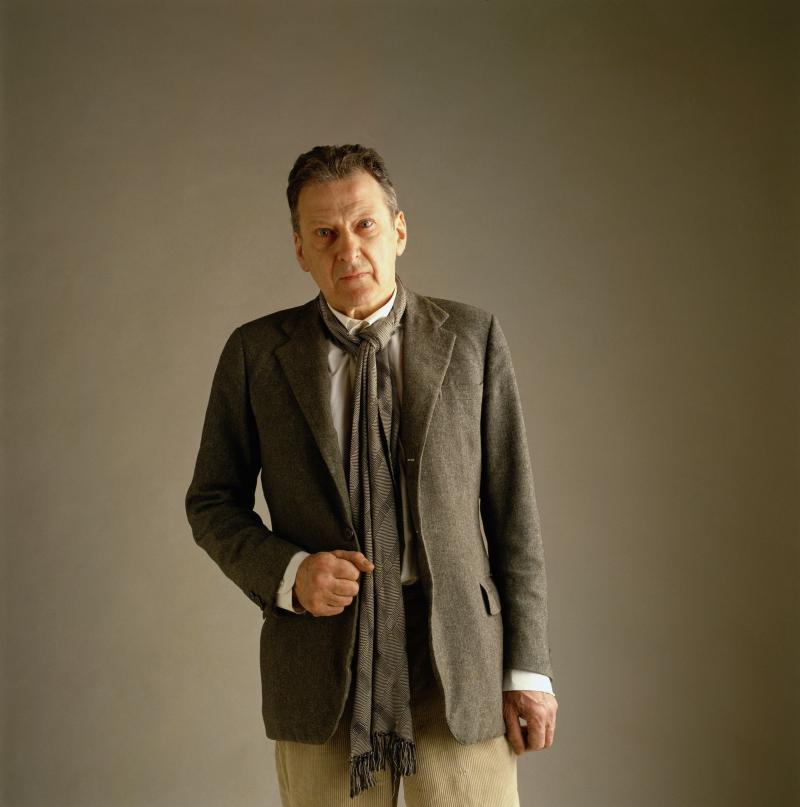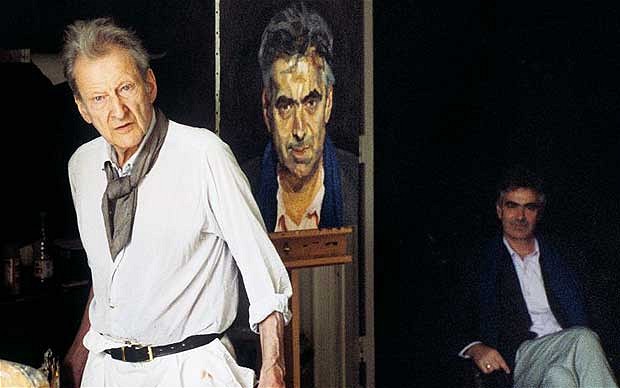Lucian Freud: Painted Life, BBC Two | reviews, news & interviews
Lucian Freud: Painted Life, BBC Two
Lucian Freud: Painted Life, BBC Two
The late artist's life and work get some Freudian analysis

He was uncompromising, honest, personal. He didn't like doing what he was told. He never followed fashion. Is this an accurate picture of Lucian Freud, or is it a description of almost every great artist who ever lived? The intensely banal voiceover for Lucian Freud: Painted Life on BBC Two which contained these insights (at least in the rough cut I viewed) made it seem like a painter out on his own, stringent in his artistic pursuit, was something we had never seen before.
The tension between the introversion of the artist, who died last year, and the extroversion of the lothario (14 kids identified to date) was well brought out by his friends. David Hockney, who appeared to have just woken up (as ever), spoke about Freud's shyness, which David Somerset, the Duke of Beaufort, refined and paradoxed wonderfully: "He was a show-off who didn't want to be noticed." He partied with Bacon but also learned from his painterly techniques.
His mature paintings are the embodiment of this push and pull. There is a hewing to the classical nude, yet the subjects are depicted with pubic hair and unidealised genitalia, and his strivings to give us the person themselves, rather than their image, take in a deeply physical contemplation of one's spirituality. A quotation from Freud given in an intertitle said he was "exploring feelings you know more deeply", and the scrutiny which went into his work - a scrutiny he had observed in Giacometti - was evident. In an artistic era where interiority could be evoked in any number of abstract ways, he was a sensual artistic literalist who gave us skin as no one else had.
 Mega-gallerist William Acquavella gave an idiosyncratic account of sitting for a portrait (basically, "I don't have time for this"), while John Richardson and Martin Gayford, two of our best artistic biographers, were much more lucid and pertinent. Richardson identified the interchangeability between painting and sex for Freud - the grasping of sensation. There was even the only video made of Freud painting - his final day of painting, it turned out - to give some insight into this, in his studio: the physicality of his technique, the concentration, the muttering were, if not sexy, then sensational.
Mega-gallerist William Acquavella gave an idiosyncratic account of sitting for a portrait (basically, "I don't have time for this"), while John Richardson and Martin Gayford, two of our best artistic biographers, were much more lucid and pertinent. Richardson identified the interchangeability between painting and sex for Freud - the grasping of sensation. There was even the only video made of Freud painting - his final day of painting, it turned out - to give some insight into this, in his studio: the physicality of his technique, the concentration, the muttering were, if not sexy, then sensational.
Not that Freud would welcome a Freudian analysis of any of this, much as it is crying out for one, for he loved his grandfather's biological, not psychoanalytical, work. There were Oedipal hints in the voiceover about his relationship with his mother, although innuendo here seems a little late. His paintings of his mother were one of the few things to be criticised, by one of his cousins, who thought that his paintings of her, mentally absent after an overdose, only ever captured her mask, never the essence he grasped everywhere else, because she was dead inside; even to pretend she had an essence to capture by painting her was to fool himself. It was a pitifully humanising moment.
When his sexual approaches towards one model failed, he destroyed the paintings
He could, of course, be domineering or distant. His daughter Bella Freud described his luminous presence and black absences. Celia Paul spoke of how her artistic ambitions and delivery of a son made her too independent, too assertive, for Freud, who showed Paul and an emasculated man in a double portrait: Paul, clothed, standing, stood on an ejaculating tube of paint; the man, naked, supine, waited unhappily to be painted. And when his sexual approaches towards one model failed, he destroyed the paintings.
The voiceover - which is, after all, the voice of the programme - must be returned to for its ballsy attempt to scale a peak of idiocy no other arts doco has dared. It was pitched at a prurient 12-year old: Freud's "naked paintings" were "mercilessly explicit"; he was "notorious for sex with young women in old age"; "romantic passion… fuelled the painting" (even that of his daughters and of men?); he had "a merry-go-round of lovers"; "the love-nest became a sickbed". It just got worse. My advice: if you watch this programme (and you should), any time a talking head isn't speaking, hit mute. You'll learn a lot more.
Share this article
The future of Arts Journalism
You can stop theartsdesk.com closing!
We urgently need financing to survive. Our fundraising drive has thus far raised £49,000 but we need to reach £100,000 or we will be forced to close. Please contribute here: https://gofund.me/c3f6033d
And if you can forward this information to anyone who might assist, we’d be grateful.

Subscribe to theartsdesk.com
Thank you for continuing to read our work on theartsdesk.com. For unlimited access to every article in its entirety, including our archive of more than 15,000 pieces, we're asking for £5 per month or £40 per year. We feel it's a very good deal, and hope you do too.
To take a subscription now simply click here.
And if you're looking for that extra gift for a friend or family member, why not treat them to a theartsdesk.com gift subscription?

Add comment